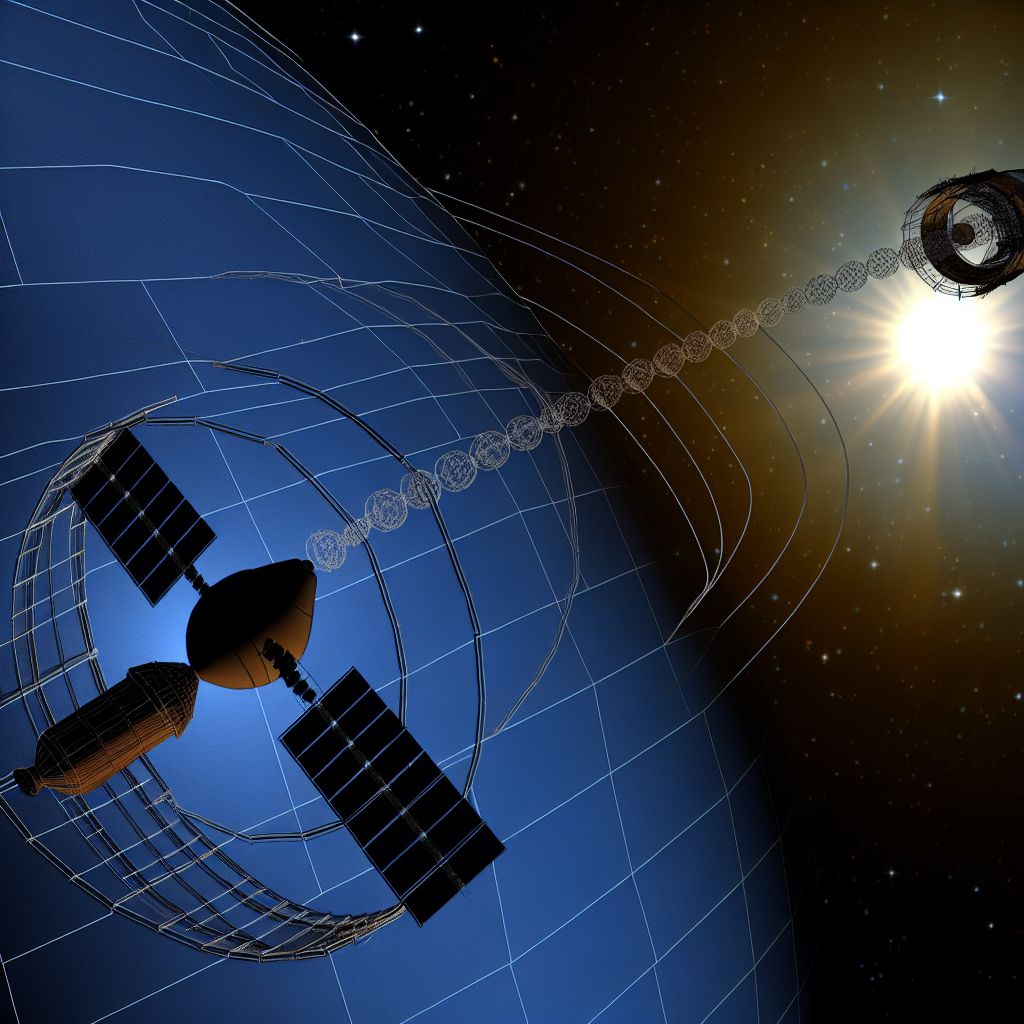Deutsch: Flugbahn / Español: Trayectoria / Português: Trajetória / Français: Trajectoire / Italiano: Traiettoria /
In the Space industry context, a trajectory refers to the path that a spacecraft or any object in Space follows as it travels under the influence of gravitational forces and other physical factors. Trajectories are crucial for space missions, determining the course of satellites, manned spacecraft, and other space vehicles from launch to their intended destination, whether it's orbiting the Earth, landing on another planet, or venturing into deep space.
Description

The planning and calculation of trajectories involve complex Physics and mathematics, taking into account the gravitational pull of Celestial bodies, the Velocity and direction of the spacecraft at launch, and the desired orbit or landing site. Engineers use trajectory analysis to optimize Fuel consumption, ensure mission safety, and achieve mission objectives efficiently. The trajectory of a spacecraft is influenced by maneuvers performed during flight, which are carefully planned and executed to correct the path or adjust the speed.
Application Areas
- Launch Operations: Determining the most efficient path for a Rocket to place a satellite into orbit.
- Interplanetary Missions: Calculating paths that take advantage of gravitational assists from planets to reach distant targets.
- Satellite Deployment: Ensuring satellites are placed into their designated orbits for optimal operation.
- Space Exploration: Planning trajectories for probes sent to explore other planets, moons, and celestial bodies.
Risks
- Collision with Space Debris: Incorrect trajectory planning can lead to potential collisions with existing space debris or other satellites.
- Mission Failure: Inaccurate trajectory calculations can result in mission failure, either by missing the target or by expending too much fuel.
- Re-entry Hazards: For missions returning to Earth, miscalculations in the re-entry trajectory can lead to loss of control and Destruction of the spacecraft.
Examples
- Apollo Moon Missions: The trajectories for the Apollo missions were intricately calculated to land humans on the Moon and return them safely to Earth.
- Voyager Probes: The trajectories of the Voyager probes took them on a Grand Tour of the outer planets, utilizing gravitational slingshots to extend their mission far beyond their initial targets.
- Mars Rovers: The trajectories for Mars rovers like Curiosity and Perseverance were designed to enter the Martian Atmosphere and land precisely in designated Exploration areas.
Similar Terms or Synonyms
Articles with 'Trajectory' in the title
- Aft-crossing trajectory: Aft-crossing trajectory: An aft-crossing trajectory is a specific type of orbital path used by spacecraft, particularly in Rendezvous or docking operations, where the spacecraft crosses behind and below the target vehicle or object
Weblinks
Summary
The concept of trajectory in the space industry is fundamental to the planning and execution of space missions. It involves the precise calculation of the path a spacecraft will follow to achieve its mission objectives, from launching into space, orbiting Earth, exploring other planets, or venturing into deep space. Trajectory planning requires careful consideration of gravitational forces, mission objectives, and potential risks to ensure the safety and success of space missions.
--
Related Articles to the term 'Trajectory' | |
| 'Orbit Correction' | ■■■■■■■■■ |
| Orbit Correction: Orbit correction in the space industry refers to the adjustments made to a spacecraft’s . . . Read More | |
| 'Orbit' | ■■■■■■■■■ |
| Orbit: An orbit is the path that an object follows as it travels around another object under the influence . . . Read More | |
| 'Ballistic' | ■■■■■■■■ |
| Ballistic in the Aerospace context refers to the motion of an object that is subject to the force of . . . Read More | |
| 'Gravitation' | ■■■■■■■■ |
| Gravitation: In the aerospace context, gravitation refers to the force of Attraction between two objects . . . Read More | |
| 'Spacecraft Navigation' | ■■■■■■■■ |
| Spacecraft Navigation in the space industry context refers to the techniques and systems used to determine . . . Read More | |
| 'Curvature' | ■■■■■■■■ |
| Curvature in the space industry context generally refers to the degree to which a physical object, trajectory, . . . Read More | |
| 'Take-off' | ■■■■■■■■ |
| Take-off in the space industry context refers to the initial Phase of a spacecraft's launch, where the . . . Read More | |
| 'Calculation' | ■■■■■■■■ |
| Calculation in the space industry context refers to the precise mathematical and computational processes . . . Read More | |
| 'Displacement' | ■■■■■■■■ |
| Displacement in the context of the space industry refers to the Phenomenon of objects or spacecraft deviating . . . Read More | |
| 'Gravity' | ■■■■■■■ |
| Gravity refers to the force that attracts objects towards the center of the Earth (or any other celestial . . . Read More | |
